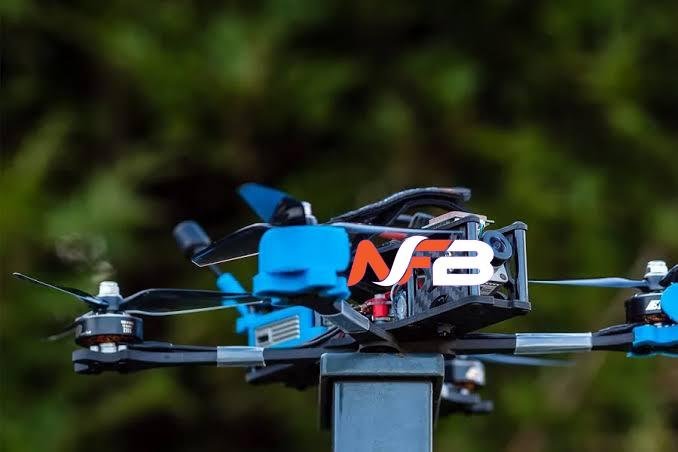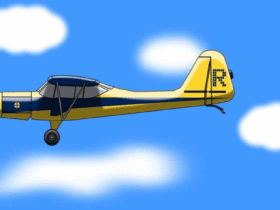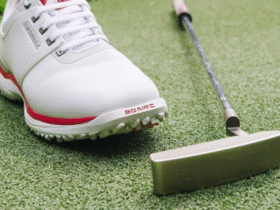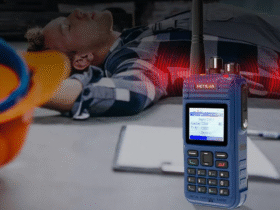FPV drones are drones in which the operator has a first-person perspective of the camera view and it has revolutionized aerial photography, racing, and exploration. The drone frame is arguably the central part of every FPV drone and it shapes the general performance, maneuverability, and sturdiness of the entire UAV and its systems. This is the reason why selecting an FPV frame for your drone is a very crucial decision that determines the performance of the drone in various terrains.
In this article I will describe what an FPV drone frame exactly is and the various categories that it can be divided into, some important factors to consider when choosing your FPV drone frame, and the materials that are used for high-performance frame kits.
What is An FPV Drone Frame?
The FPV drone frame is the outer contour or the structural support of a drone, in which other parts of the drone including the motors, batteries, and cameras are fixed. It defines the design features particular to the size, and weight but also the sturdiness of the flying machine. The frame also plays the role of flight parameters such as the speeds, stability, and the ability of the drone to maneuver.
In FPV racing or freestyle flying, it is very crucial to have a strong, compact, and more importantly well-designed frame. From this perspective, the choice of the right frame will always enhance the flying and save your drone from several catastrophic crashes and harsh landings.
Types of FPV Drone Frames
FPV drone frames are available in different dimensions and arrangements depending on the flying techniques or their purpose. Here are the most common types: Here are the most common types:
1. X-Frame
It will also be useful to note that the X-frame is the most commonly used design for FPV racing drones. Top view, the pattern of its arms is in ‘X,’ with equal intervals between all four arms. The frames are preferred for their lightness and stability. Since the motors are placed side by side, it gives more force and balance which makes it ideal for the fast and complex movement essential in drone racing.
Key Features:
Proven to travel at incredible speeds, and nimble in executing their operations.
Good weight distribution to improve on the control aspect of the rear suspension system.
It’s also ideal for first-person view racing and flying as well as freeride.
2. H-Frame
The structure of the H-frame is wider than the X-frame and the motors are centered at a larger distance. It is nonetheless more appropriate for freestyle flying as well as aerial photography because of the stability it provides. The extra space in the middle of the frame provides multiple mounting points for DSLRs and other electronics; pilots who value sexy flight and payload hauling will adore this frame.
Key Features:
Wider, more stable frame.
Extra space for different cameras and other in-shoot necessary accessories.
Also, SV and MV are suitable for freestyle flying and aerial photography.
3. True X-Frame
The True X-frame can also be understood as the modification of the X-frame when the arms are located squarely. This configuration makes it possible to dispense the weights evenly on all four arms and this makes the drone very agile and balanced in its flights. Real X-frames are common among professional drone racers who love to have complete control and drain anytime.
Key Features:
Perfectly balanced weight distribution.
Highly responsive but for those occasions that require a high level of accuracy in flying.
Most suitable for FPV racing professionals.
4. Stretch X-Frame
The Stretch X-frame is another type of X-frame, where the front and back legs are elongated as compared to the side legs. This design enhances forward flight stability and increases predictability at high speeds, which makes this design suitable for drone racing. The similar elongated arms also dampen vortices and drag and thus make flights a bit more comfortable.
Key Features:
Enhanced forward flight stability.
Low drag for enhanced high-speed flight.
Used commonly in FPV racing, especially for high-speed racing.
Some Considerations When Selecting an FPV Drone Frame
When choosing the appropriate frame for an FPV drone, some of the features that affect the drone in terms of performance, longevity as well as applicability must be taken into account. Here we have highlighted some of the specific points.
1. Size
FPV drone frames are available in multiple sizes and their dimensions are usually stated in millimeters and, more specifically, in the distance between motors. The most common sizes include: The most common sizes include:
3-inch frames: Compact ones, suitable for indoor flying and for an environment where there are many obstacles.
5-inch frames: Currently, the 150-200cc class has gained the highest demand for FPV racing and freestyle while providing enough speed and stability.
7-inch frames: It has larger frames for long flights and also for heavy loads for heavy payload.
For racing, the smaller frames are used because frame sizes range between 3 and 5 inches are lightweight, and have a fast response rate. For long-range or cinematic flying, it is convenient to use bigger frames with higher dimensions than 7 inches since they have higher stability, and can have more battery and camera capacity.
2. Weight
Specifically, the weight of the frame is considered to be a critical determinant of the dynamics of a drone. A light frame means the drone can speed up faster, bring great handling, and it can fly longer. Nevertheless, lighter frames might also be stronger and more sensible to damage in the event of a crash. That is why the question of maintaining an optimal weight is one of the most important in the case of racing drones, which are more prone to crashes.
3. Durability
It is costly though, but durability is vital, especially in FPV racing, where crashes are part of the usual routine. In addition to this, it must be strong enough to be able to withstand impacts without the frame itself bearing the brunt of it and suffering a lot of damage. Carbon fiber type frames, for instance, are strong yet light and therefore perfect to use on high-end models like drones. However, proper materials like plastic or aluminum can also be used in the preparation of the frame at a cheaper cost but these may be heavier and less resistant.
4. Camera Mounting Options
This is particularly important for freestyle and aerial photography drones for which the mounting of cameras is paramount. Consider frames with the possibility to adjust the camera position and hold, with some sort of shock absorption for vibrations and enough space for both FPV and high-definition cameras. This results in smoother video and much better flight of the drone.
Best materials to use when building FPV Drone Frames
One of the most important features of the drone frame is the type of material that is used in construction; this determines the weight and the durability of the drone among other factors; Price. Here are the most common materials used in FPV drone frames: Here are the most common materials used in FPV drone frames:
1. Carbon Fiber
Most of the FPV drones use carbon fiber as the major material for making their frames. It is lightweight, very strong and it can withstand any impact. The main reason why carbon fiber frames are today’s favorites for FPV racing is their lightweight yet rigid character.
2. Plastic
Flexible and light plastic frames are usually adopted in learner or toy-type drones. Though they are cheap and easy to produce, plastics compared to Carbon Fiber composites are not very strong and these are prone to shatter upon impact. Lightweight, Low payload, suitable for Helicopters with low flying speed, nor suitable for High-speed performance drones.
3. Aluminum
Compared to carbon fiber frames, aluminum frames are heavier but can boast considerably long service life. They are usually applied in industrial and commercial UAVs wherein added weight is not a major concern. Aluminum also has resistance to corrosion and is very suitable for operational conditions in a given environment.
4. 3D-Printed Materials
Different constructors apply 3D printing to develop individualistic FPV frames for drones. Although the use of 3D frames brings in the freedom of choice, they stand to be less constant as compared to carbon fiber ones that wear out quicker and thus are replaced frequently. However, this technology is most suitable when one wants to design frames in a personal manner, using 3D printing technology.
Conclusion
Selecting the right FPV drone frame can mean the difference between flying and winning a race, freestyle flying or even taking high-quality aerial photography shots. A brief study of the frames, the materials used, and various designs leads to a good understanding that enables one to make the right decision on the mode of flying.
Developments of the frame of the FPV drones are getting smaller and lighter while at the same time more stable and powerful than ever before. From the novice to the professional drone flyer, having a good frame that will provide a good flight worth the investment.















Leave a Reply